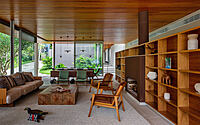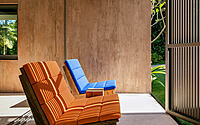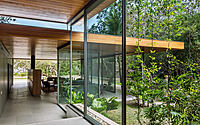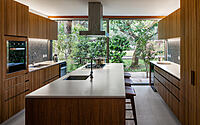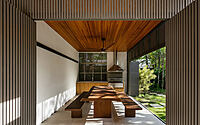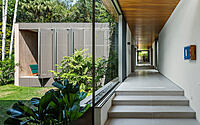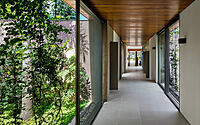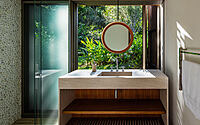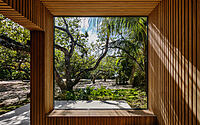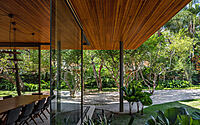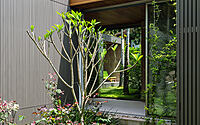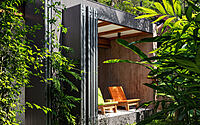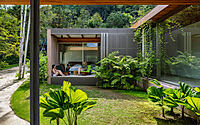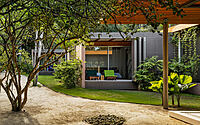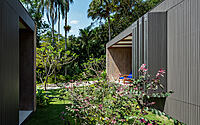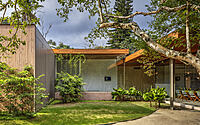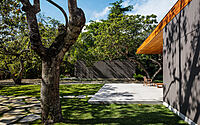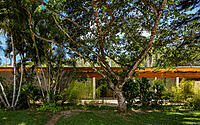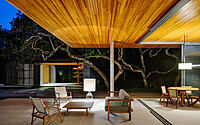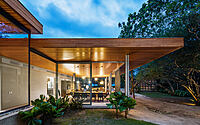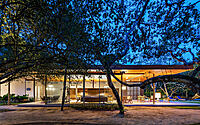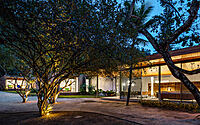Cashew Tree House by Terra Capobianco
Discover the Cashew Tree House, a single-story house designed by Terra Capobianco and Galeria Arquitetos located in Ubatuba, Brazil.
This stunning property is nestled between light and shade from the cashew tree tops, allowing it to blend in with the natural beauty of its surroundings. With a design style that combines conventional systems with laminated eucalyptus wood structure, it also features a variety of passive design strategies that ensure environmental comfort for its users.
This luxurious residence is located in Praia Vermelha do Sul, a beach in Ubatuba that is known for its stunning views and sun-filled days.

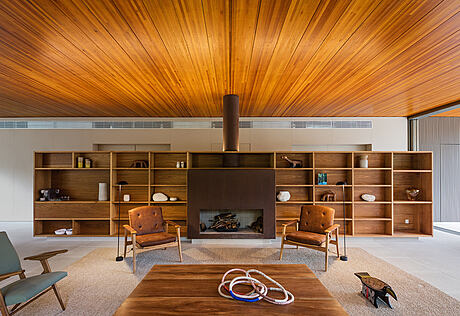
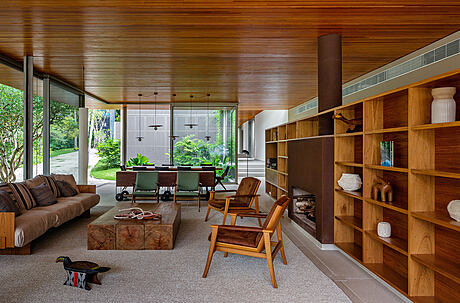
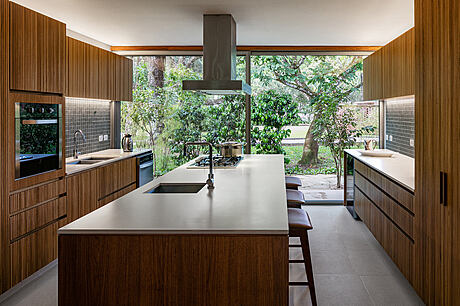
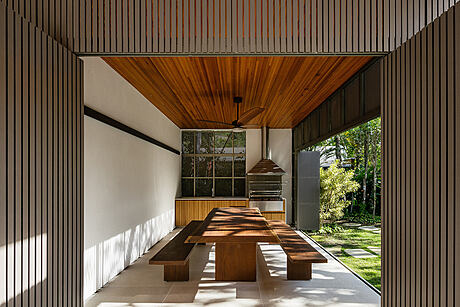

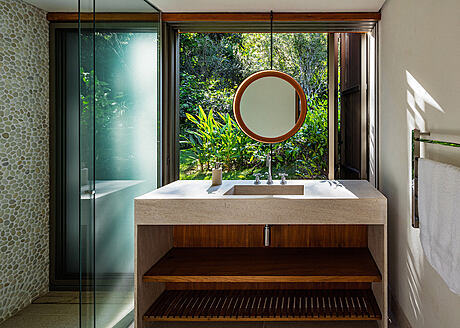
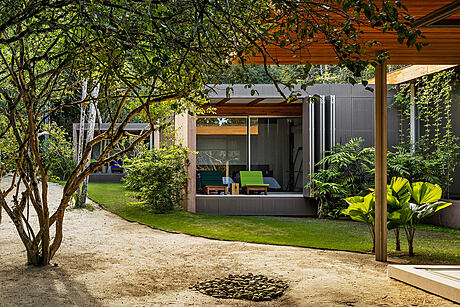
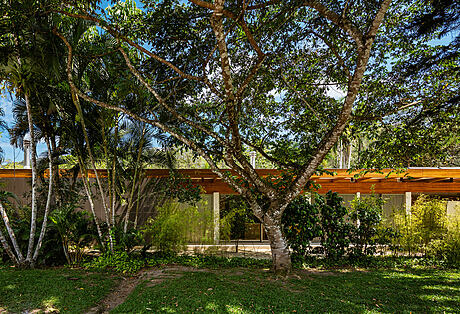
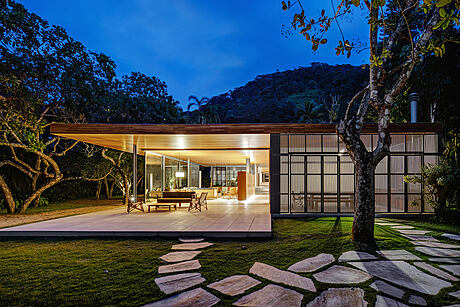
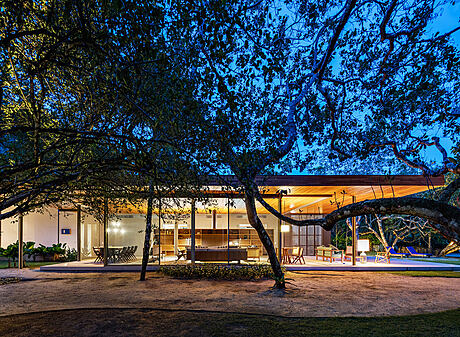
About Cashew Tree House
Casa dos Cajueiros (Cashew Tree House): A Project by Terra Capobianco and Galeria Arquitetos
Located on the coast of São Paulo at Praia Vermelha do Sul, Ubatuba, Casa dos Cajueiros (Cashew Tree House) is a unique project by Terra Capobianco and Galeria Arquitetos. The 33-meter-wide (109 feet) and 80-meter-deep (262 feet) lot is occupied with crooked trunks and irregular branches, providing a shelter between the light and shade of the cashew tree tops. The design takes advantage of the gap between the treetops and keeps the pre-existing species on the land.
Four Levels of Implantation
The Casa dos Cajueiros (Cashew Tree House) is implanted on four levels. The lowest level, close to the sea, concentrates the social, leisure, and service areas. On the same level, a volume was built next to the beach access, housing the sauna and the surfboard storage area. The six suites are distributed along a 33-meter-long (108 feet) corridor with balconies that access private patios.
Pinkish-Pigmented Concrete Gables and More
Pinkish-pigmented concrete gables define the bedroom modules, constructed with a mixed structure of glued laminated timber beams and wall paneling. The limit between inside and outside is provided by the Venetian skin in vertical slats, which provides visual permeability without interfering with the privacy of the suites. The house structure mixes the conventional system in its base structure – with reinforced floor slab, and concrete pillars and gables – with the roof in laminated eucalyptus wood structure.
Social Area and Passive Design Strategies
The social area features 12-centimeter-thick (4.7 inches) and 30-centimeter-wide (11.8 inches) wooden slabs, interlocked to form a large slab, spanning 7.30 meters (23.9 feet) plus 2.10 meters (6.9 feet) of overhang. In the transversal direction, an inverted beam, also made of wood, receives the load from the slabs and redistributes it on three slender metallic pillars. In the other direction, the result is a continuous space of 19 meters (62.3 feet) free of supports that opens 180 degrees to the surrounding landscape. Generous eaves protect the frames and provide shading for the interior spaces. The project also adopts several passive design strategies to ensure environmental comfort for users, such as floor-to-ceiling windows that ensure constant air renewal, cross ventilation, and natural lighting.
Photography by Nelson Kon
Visit Terra Capobianco
- by Matt Watts

